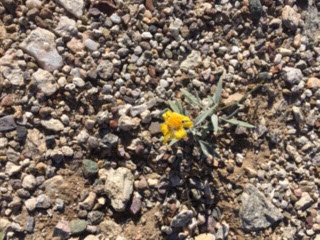A Sense of Place
In my last blog post, I introduced myself to you by describing what I read and why I write. Today I’d like to tell you about where I live because place and person go together like hand and glove.
Before moving to Tucson thirteen years ago, I’d spent most of my life in a region with four seasons, frequent rain, lush grass, tall leafy trees and abundant shrubbery. Though nature had its angry aspects which took the form of floods and tornadoes, it would usually accommodate human needs. Living in a desert is the reverse; more often than not, we must accommodate it.
With only eleven inches of rain a year, the Sonoran Desert is able to sustain a variety of vegetation, nearly all of it covered with needle-sharp thorns, several species of wild animals (none especially friendly), and a host of primordial reptiles, most poisonous. There’s nothing about this landscape that’s kind or even “pretty” in the conventional sense; gardens and lawns are anathema. Doing its best to keep intruders at bay, it’s hostile and aggressive if we dare get too close, and the air is so dry it causes nose bleeds. So why does anyone want to live here? How can anyone feel at home in an environment that’s so averse to human presence?
We’ve heard it before—there are people of the mountains and people of the sea, but those of us who love the desert are of a different stripe. Standing on the valley floor, surrounded by solitude, I’m enthralled by the desert’s elemental character, its emptiness and hushed silence, the vast expanse of sky and space it affords, the sense of freedom it inspires, and its uncanny stillness. For even when a stiff wind blows, the cacti—saguaros, cholla, cow’s tongue—stand straight as soldiers. Yes, the heat can be fierce, the drought deadly and the winds harsh, but there’s something about this place that strikes a chord in my heart.
I love the desert because it’s unconditioned, because it can’t be domesticated or coerced into being something it isn’t. The language it speaks is bold, raw, honest, and it arouses an analogous response in many who live here. Over the ages, the desert’s inspired thoughts of eternity, a timeless metaphysical reality, perhaps because the light, air and empty space—all immaterial phenomena—are so palpable.
However, the desert’s also an ever-changing source of sensuous, physical beauty which never ceases to take me by surprise. It might be the golden penumbra that bathes the mountains red before sunset, or the crystalline night air that turns every star into a laser-like spot of white light, or the way a tiny yellow marigold springs forth from a crack of parched, dusty land. Come late July and August the desert is graced with soul-stirring displays of thunder, lightning and monsoons of such force they can sweep a house right off its foundation, and if at this time you’re lucky enough to live near a creosote bush, you’ll be enveloped by a rich, pungent, wonderfully ephemeral scent that’s only released in the air by rain.
Though I wasn’t born here and don’t have the landmark memories that come with being in one place for a long time, an emotional bond has grown between me and the desert. I find it deeply resonant and feel somehow altered by it. Because the past, with its many layers of culture and civilization, does not weigh upon one so heavily here, it’s possible to imagine reality in a new way. Whether we’re conscious of it or not, the land we inhabit—its flora and fauna, its weather and geology—is a persistent influence on our sense of self.
For this very reason, I don’t believe I could have written Going Widdershins were I still living in the Midwest. When one lives in a place for a long time as I had, one continues to move in the same circles. Perhaps you’ve also had this experience, as I don’t believe it’s unusual. The desert attracts a wide variety of humanity, and I’ve had the privilege to meet those who come from backgrounds very different from my own, such as a shaman, an artist who paints rocks, a Nepalese jewelry designer, a dream catcher, a native American poet and a woman who works as a grocery-store bagger in order to collect unusual quirks and mannerisms for her novel. When we’re exposed to unfamiliar people whose life experiences have been nothing like our own, it pushes our boundaries, giving us room to grow in new ways. That’s certainly been the case for me here in Tucson.
Is there a particular region or landscape that you find particularly evocative? Is it somewhere you visit or where you live? What makes it resonant for you? If you feel like sharing, I’d like to hear about it.
